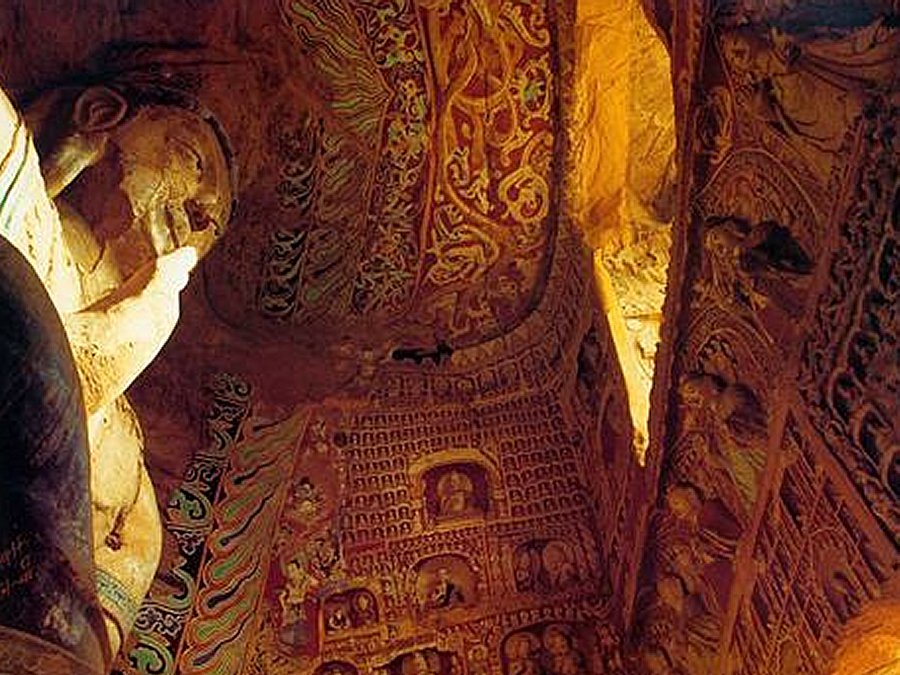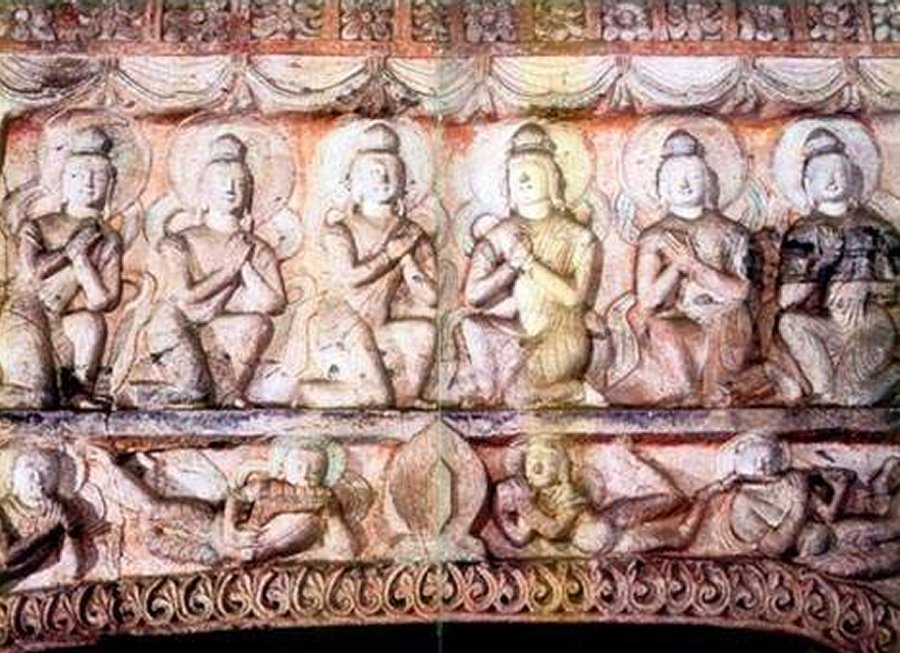AncientPages.com - Yungang Grottoes is a stone carving treasure that is renowned all around the world.
Richly decorated grottoes, known as Wuzhoushan Grottoes in ancient times, are located on the southern foot of the Wuzhou Mountains, in the Shi Li River valley, 16 km west of Datong City.
There are 45 main caves, 252 niches (for a statue of Buddha) of different sizes and more than 50,000 stone statues (completed in sixty years) in which the largest one is as high as 17 meters while the small ones are only several centimeters in height.
The site stretches about 1 kilometer from east to west.

Three main periods can be identified in the construction: the Early Period (460-65), the Middle Period (c . 471-94) and the Late Period (494-525). Apart from the grottoes, the nominated core area includes the remains of a castle, a defence wall, and a beacon tower of the Ming dynasty on the plain above the grottoes. Credits: Cultural China
The ancient Chinese Buddhist temple grottoes that are excellent examples of rock-cut architecture, representing the outstanding Buddhist grotto arts of ancient China in the 5th to 6th century.
Yungang Grottoes were firstly cut in 453A.D. Although the statue making project lasted to 525A.D. most of the stone carvings in the grottoes were completed in 494A.D. Some 40,000 people, including the Buddhists from what is present Sri Lanka, contributed to the huge project.

The arrangement and decoration of the grottoes predominantly demonstrates the style of Chinese buildings. In addition, the dance with accompaniment, Baixi (recreational activities of the masses) and acrobatics carvings left in the grottoes all reflect the characters of the ideas of Buddhism in different dynasties and the social life in these times.
According to the time of cutting, these grottoes can be divided into the early, middle and late stages.
The early statues are characterized by vigorous and unsophisticated customs of the Western Region while the grottoes of the middle stage are delicate and luxurious, showing complicated and changing artistic styles.
Carved out of a sandstone mountain these caves contain more than 50,000 Buddha sculptures with the oldest and the largest constructed in 460 AD. Credits: Cultural China
The complex consists of large caves, including four groups of twin caves and one group of triple caves with the walls in the east, west and south sides, fully decorated with the statues of Buddha, even the roof is decorated with dancing fairies, centered with a lotus, which are very stately and graceful in appearance.
Yungang Grottoes, known as Wuzhoushan Grottoes. In 2001, the Yungang Grottoes were made a UNESCO World Heritage Site. Credits: Cultural China
The Chinese palace building carvings and the Chinese style niche evolved on this foundation were all widely used in the construction of grotto temples in later times.
Although the scale of the grottoes of the late stage was reduced, the proportion of characters was appropriate.
The Yungang Grottoes, in Datong city, Shanxi Province, with their 252 caves and 51,000 statues, represent the outstanding achievement of Buddhist cave art in China in the 5th and 6th centuries.
Credits: China Daily
The arrangement and decoration of the grottoes predominantly demonstrates the style of Chinese buildings.
In addition, the dance with accompaniment, Baixi (recreational activities of the masses) and acrobatics carvings left in the grottoes all reflect the characters of the ideas of Buddhism in different dynasties and the social life in these times.
The whole grotto complex is magnificent with delicate carvings. All the statues are precious and vivid, representing the development of art, architecture, music and religion at that time.
Yungang is a relic of the Northern Wei Dynasty (386-534) of the nomadic Toba people. They recruited 3,000 monks from along the Silk Route to turn Buddhism into their state religion.
In 2001, the Yungang Grottoes were made a UNESCO World Heritage Site.
AncientPages.com
References: China Internet Information Center





